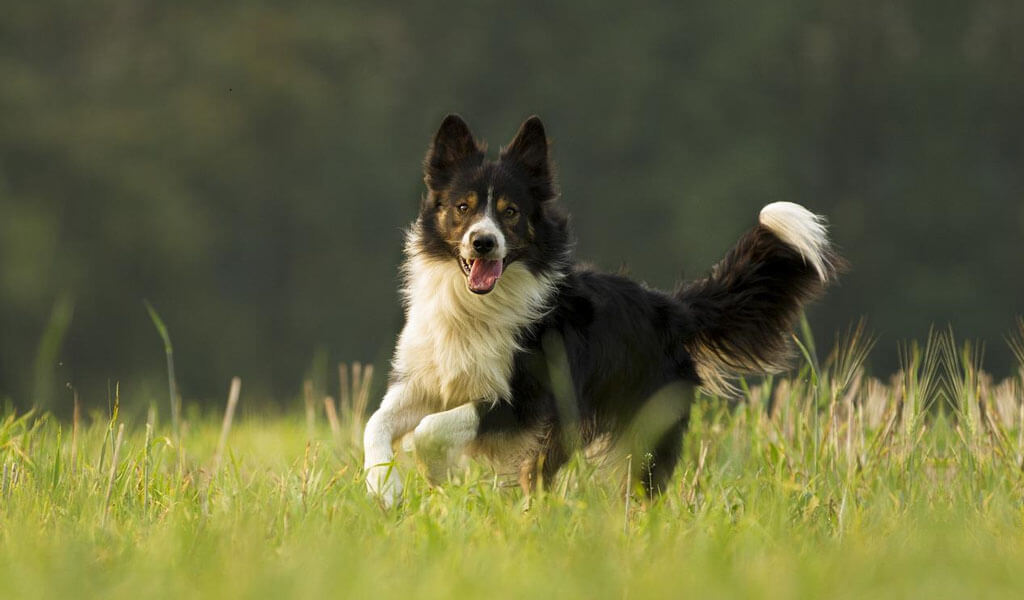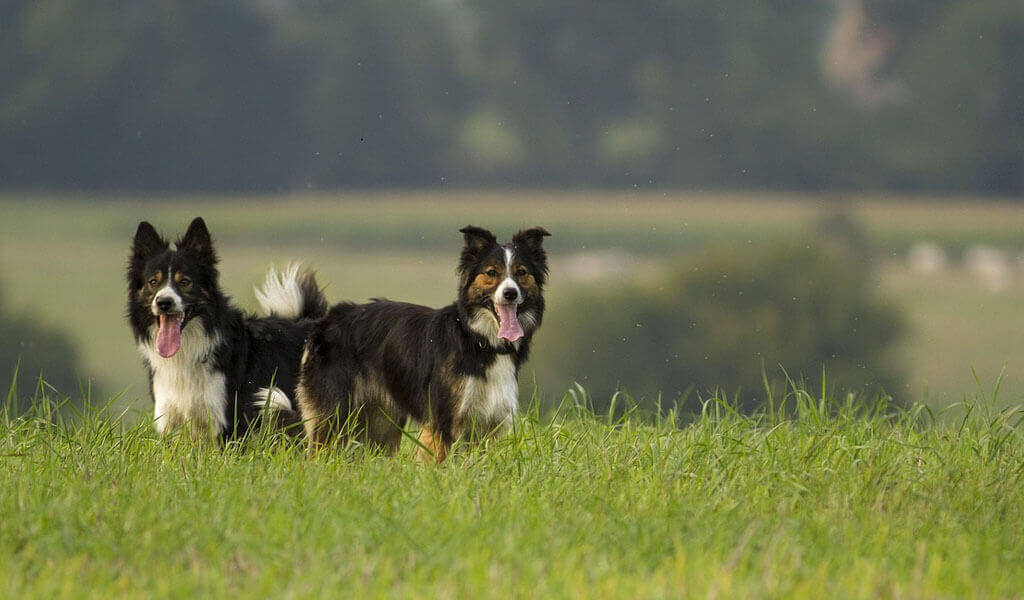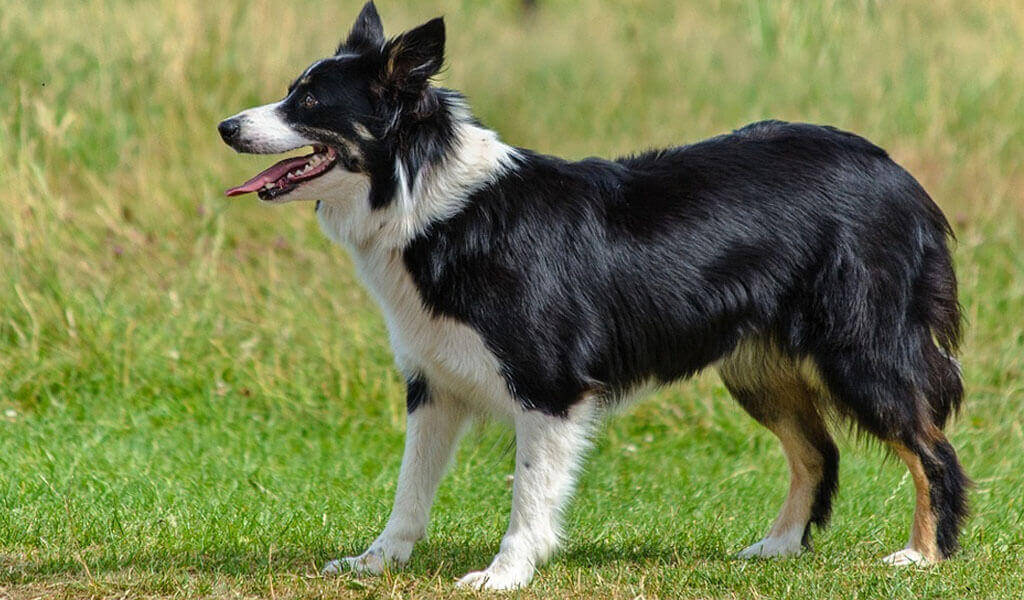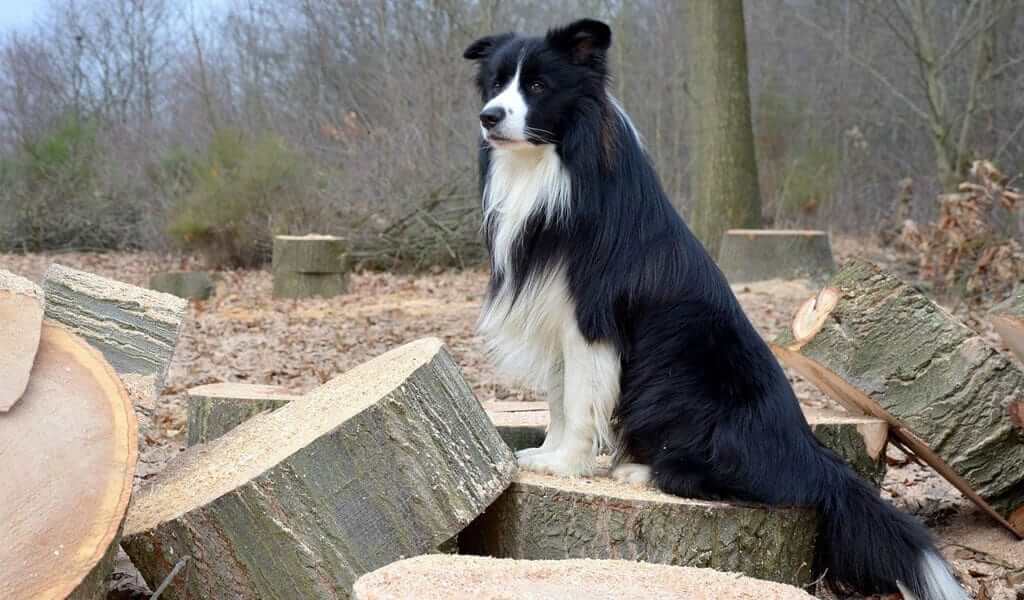The Border Collie dog is a highly intelligent, energetic, acrobatic, and athletic dog. They frequently compete successfully in sheepdog trials as well as a variety of dog sports such as dog obedience, disc dog, herding, and dog agility.
This is a medium-sized British herding dog breed. They are descended from landrace sheepdogs that were once found throughout the British Isles but became standardized along the Anglo-Scottish border. They are now mostly used as herding dogs for livestock, particularly sheep.
The Border Collie dog appears in a variety of colors . Its stamina and agility allow it to stay active for extended periods of time.
Highlights
- Border collie Dog Overview
- History Of Border Collie Dog
- Appearance
- Temperament
- Care For Border collie Dog
- Health
- Advantages and Disadvantages
- Image
Border collie Dog Overview
Origin: Anglo-Scottish border
Breed Group: Herding
Height: 19 to 24 inches and Bitches 18 to 22 inches
Weight: 35 to 45 pounds and 30 to 40 pounds
Life Span: 10 to17 years and an average of 12 years
Breed Size: medium
Temperament: outgoing, friendly, and playful
Intelligence: high
Shedding Amount: seasonal
Exercise Needs: high
Energy Level: high
Barking Level: when necessary
Coat: Smooth or rough and double coat
Color: Solid colored, bicolored or tricolored on blue merle, red merle, chocolate merle, liver, lilac merle, bear, chocolate, lilac, blue, sable merle, sable, shaded sable, honey sable, chocolate sable, black, brindle or orange.
Litter size: 4-8 puppies
Hypoallergenic: No
History Of Border Collie Dog
Border collie is descended from landrace collies, which are widely in the British Isles. The breed got its name from its likely origins along the Anglo-Scottish border. The term “Colley” first appeared near the end of the nineteenth century, though the word “collie” is older and comes from the Scots language. It is also believed that the term “collie” derives from the old Celtic word for “useful.”
The term “border collie” was coined in 1915 by James Reid, Secretary of the International Sheep Dog Society ISDS in the United Kingdom, to distinguish those dogs registered by the ISDS from the Kennel Club’s collie, which to developed from the same working stock but their had developed.
border collie dog Herding dogs, particularly Border Collies, became valuable assets for their owners along the Scottish-English border, and the best working dogs were bred with each other. These herding dogs were known as Norther Sheepdogs, Welsh Sheepdogs, or Highland Collies, depending on the terrain they worked on.
Appearance
Border collies dog resemble lighter-weight Australian shepherds, but instead of the bobtail that distinguishes the Aussie, border collies have a feathered tail that reaches the hocks. The head is similar to a collie’s, and the body is slightly longer than the dog’s height. The ears stand upright, but the tips droop, and giving their a playful appearance.
Some border collies have a three-inch-long coarse coat, while others have a one-inch-long sleek coat. Color combinations include black and white, red and white, black and grey, all black, and tri-color. Border collies with longer hair typically have a lush mane and tail.
Border Collies dog make wonderful pets for active singles and families They have a attract personality and enjoy being active with children and parents. Border Collies also make teammates for frisbee, hiking, and agility.
A Border Collie has a double coat that is divided into two types: rough and smooth. The texture of the outer coat is coarse and rough, whereas the undercoat is smooth and soft. The coat is mostly black with a white blaze on the face, neck, legs, and tail.
Temperament
Border collies are widely regarded as the most intelligent dog breed. The border collie is ranked first in Stanley Coren’s The Intelligence of Dogs, and is one of the top ten smartest dogs. Although the border collie’s primary function is to herd livestock, the breed is becoming increasingly popular as a companion animal.
Border Collies are a sociable breed that enjoys the company of other dogs and can get along with cats if introduced at a young age.
Border collies are dependable and loyal companions when given enough exercise. They are focused on whatever they are doing and tend to stare, which can be frightening to other animals. They also enjoy chasing other animals.
border collie are notorious for chewing holes in walls and furniture, as well as destructive scraping and hole digging. Border collies have a strong desire to herd, which they may show when they are around small children, cats, or other dogs.
Care For Border collie Dog
Training
Border Collies should be trained in the same way that other dog breeds are. Border Collies are responsive and learn quickly due to their intelligence and working backgrounds.
Make sure they Border Collies require a lot of physical and mental stimulation on a daily basis due to their extremely high energy levels. Allow your dog plenty of time to play and run around during training sessions to keep their attention.
Socialize them thoroughly. When your Border Collie puppy is young, introduce him or her to a variety of people and situations. This type of early socialization will encourage them to obey your commands in crowded places.
Begin training as soon as possible. Border Collies are intelligent dogs who respond well to training from a young age. Begin teaching your puppy basic training commands when he or she is three to four months old.
grooming
The hardworking Border Collie isn’t finicky, and he doesn’t require a lot of grooming to look good.
Borders collie have medium length double haired coats that shed but not excessively. They require regular bathing and brushing to keep their coats clean and smooth.
If necessary, trim his nails once a month, and check his ears once a week for dirt, redness, or a bad odor, which can indicate an infection. this To avoid problems, wipe them out weekly with a cotton ball dampened with a gentle, pH-balanced ear cleaner.
Brush your Border Collie dog teeth at least two or three times a week to remove tartar buildup and the bacteria that lurk inside it. regular brushing is even better if you want to prevent gum disease and bad breath.
feeding
your dog To stay happy and healthy require a lot of physical and mental stimulation. They also require high-quality protein-rich nutrition to maintain and develop their muscles.
If you are getting a Border Collie puppies you should already know what you are going to feed it to keep it healthy and happy. A natural, raw diet is the best diet because it gives you control over what you feed your Border Collie and is based primarily on feeding raw, meaty bones and food.
Raw meat, raw vegetables, raw, meaty bones, fish, muscle meats, fish, and dairy products such as eggs are all part of a raw diet. Grain is not recommended because it is difficult for Border Collies to digest and many are allergic to it. Supplements such as fish oil and kelp can be added if necessary.
People who feed their a balanced diet to their Border Collie may find that it reduces their visits to vet.
When feeding vegetables to your Border Collie, process them in a food processor until they are in small chunks that are easy for your Border Collie to eat and digest.
Many fruits and vegetables are poisonous to your Border Collie or are difficult for your Border Collie to digest. for example, corn, will not harm your Border Collie, but it provides no nutritional benefit, as evidenced by whole pieces of corn in your Border Collie’s through faeces. There is no point in feeding your Border Collie if the food contains no nutritional value.
The following vegetables are beneficial to your Border Collie:
- carrots
- broccoli
- spinach
- green beans
- yams
- zucchini
Health
The Border Collie is generally a very hardy and healthy breed but Every dog has the potential to develop genetic health problems,
Border Collie Collapse, also known as “the wobbles,” is a disease that affects many herding breeds. Border Collie Collapse appears to be linked to high-intensity exercises that are particularly exciting to the individual dog. Some dogs, for example, cannot retrieve a tennis ball because they find it too stimulating, but they can run for several miles with no symptoms of Border Collie Collapse. To them for Disorientation, mental dullness, loss of attention, dragging of hind legs, and eventually the need, to sit or lie down are common symptoms.
Apart from this, the following common diseases can occur:
Hip Dysplasia: a genetic disorder in which the thighbone does not fit properly into the hip socket, resulting in lameness or pain in either leg.
Retinal Atrophy: is a condition that As the disease progresses, the border collie dogs may become night blind or lose sight during the day.
Epilepsy: Epilepsy is a neurological condition that is inherited from one’s parents. Epilepsy in dogs can cause mild to severe seizures.
Osteochondrosis Dissecans: is an orthopedic condition that causes an abnormal growth of cartilage in the joints, resulting in painful stiffening.
The National Breed Club recommends the following health tests:
- Hip Evaluation
- Ophthalmologist Evaluation
Read also: Border Collie Lab Mix
Advantages and Disadvantages
Advantages
- Loyal and hardworking.
- Intelligent and easily trainable.
- Excellent in agility and dog sports.
- Border Collies have a very forgiving breed standard.
- These dogs thrive on physical activity.
- Border Collies are a hard breed.
Disadvantages
- If not given enough exercise, stimulation, and companionship, it can become destructive.
- They may be unsuitable for households with small children or other pets due to their strong herding instincts.
- They are not suitable for small-space living because they require a yard or a farm to expend energy.
- Border Collies dog can be highly territorial.
- You will require to your Border Collie additional socialization time.
- Some Border Collies have natural nipping behaviors that can be difficult to control.
Image




